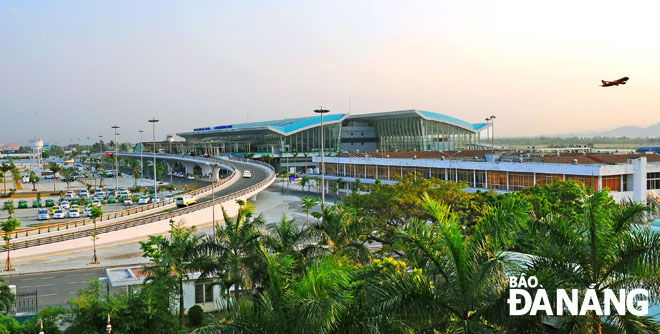New international routes boost the city's tourism's progress
In addition to the development of attractive new tourism products, the opening of new international routes connecting Da Nang with other destinations worldwide has helped the city attract growing international visitor numbers. Thanks to this, the city’s tourism industry has promoted significantly.
 |
| Foreign tourists being warmly welcomed at the city’s International Airport |
In recent years, the city’s tourism has witnessed a significant increase, not only in number of tourist arrivals every year, but also in infrastructure development, including accommodations, and railway, airway and seaway transport services.
In the first half of this year, Da Nang welcomed a total of about 4.32 million visitors, up 15.1% compared with the same period last year. Of this figure, the number of foreigners went up by 26.1% to hit around 1.82 million, whilst that of domestic visitors rose by 8.3% to about 2.50 million.
Encouragingly, the number of tourists coming to the city by air has recorded a strong growth. According to the latest figures released by the municipal Tourism Promotion Centre, the number of foreign tourists arriving in the city via direct international flights in the first half of this year stood at 1.49 million, up 45.8% versus the year-ago period.
According to the Da Nang International Terminal Investment and Operation JSC (AHT), there are 18 scheduled and 16 charter direct international air routes into Da Nang with a frequency of 492 flights per week, an increase of 10 routes against last year’s figure.
As for international routes connecting the city with such its key foreign tourist markets as South Korea with a frequency of 220 flights per week and China with 74 flights per week, the average occupation rate of Incheon – Da Nang flights operated by Vietnam Airlines usually stands at 72%, whilst that of Vietjet Air-operated services linking with South Korea hits 91.77% and those connecting with China 99.04%.
During the Golden Week from 27 April to 2 May, 26 non-stop flights connecting with Japan brought a total of 7,053 tourists to Da Nang.
Likewise, direct routes linking with other Southeast Asian tourist markets, especially Thailand, have also gained remarkable growth.
In particular, the non-stop Da Nang-Doha service has been fully taped, hereby helping the city connect with 150 destinations in the Middle East, Western Europe, and North America to attract even more visitors from these highly potential regions.
Between 1 January and 31 May, 173 flights brought a total of 11,067 passengers hailing from Spain, the USA, the UK, France, and Germany to the city.
 |
| A view of the city’s International Airport |
Under the plan of attracting more foreign travellers to Da Nang, in the remaining months of this year, more international routes will be opened.
In detail, Bamboo Airways, Viet Nam’s newest carrier, plans to operate the Da Nang- Hangzhou charter flight with a frequency of 2 flights per week.
In a similar vein, the country’s private budget carrier Vietjet Air will launch non-stop service between Da Nang and Tokyo on 30 October, with one return flight per day. The flight duration is approximately 5 hours and 30 minutes per leg for the soon-to-be-opened Da Nang - Tokyo service.
Deputy Director of the municipal Department of Tourism Truong Thi Hong Hanh remarked, besides the opening of new international routes, it is also necessary to make better use of the existing ones.
In parallel with this task, the tourism industry will advertise the city’s image to highly potential markets at home and abroad, with a focus on such foreign tourist markets as China, South Korea, Japan, Thailand, Singapore, and Malaysia.
The Department of Tourism will closely work with tourism businesses to seek partners in order to promote the opening of new international routes connecting Da Nang with Australia, India and some European countries in the coming time.
Furthermore, the tourism industry will continue to implement such plans as diversifying the international tourist markets in the 2019 - 2020 period, and organise tourism promotion programmes in Hong Kong, India, Singapore, Malaysia, and Australia in a bid to attract even more foreign holiday-makers.